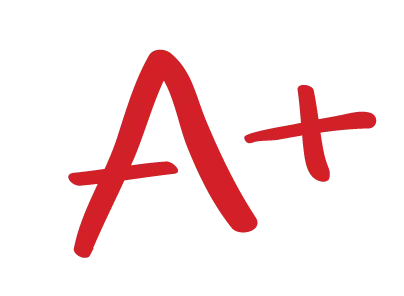Teacher Evaluation
- Develop a teacher evaluation checklist for the grade level and subject you researched in Week 3 that is either based on Table 9.1: Hunter’s Elements of Lesson Design or Table 9.2: Farrell’s Elements of Lesson Design.
- Have at least 2 evaluation points for each row on the table.
- In addition to written notes, you must devise a rating scale (a number scale, unsatisfactory to exceptional, etc.) for each evaluation point on your checklist. You can use different scales for different points.
- Consider the points made from the two articles posted this week about implementing teacher evaluation.
- Respond to at least one of your classmates.
- Identify at least 3 professional development opportunities to address teachers who need improvement based on their scores on their evaluations.
- Explain how you will assign professional development in a fair and non-discriminatory way.
- Consider the points made from the two articles posted this week about implementing teacher evaluation and follow-up training.
Peer Post
WRITE THIS ESSAY FOR ME
Tell us about your assignment and we will find the best writer for your paper.
Get Help Now!TEACHER EVALUATION CHECKLIST
Grade Level: 8th
Subject: Science
CHECKLIST
Element
Evaluation Points
Anticipatory set
- Teacher “hooks” virtually all students with a probing question, activity or prompt.
_____ Successful _____ Unsuccessful
- Teacher explains the focus of the lesson (what will be learned).
_____ Successful _____ Unsuccessful
- Teacher activates either prior knowledge, experiences, readings, or vocabulary.
_____ Successful _____ Unsuccessful
Objective and purpose
- Teacher states what (the objective/MCCRS) the students will learn.
- Teacher states how (methods) the students will learn.
- Teacher states why the students will learn the objective (benefits/applicability).
4 3 2 1
Highly Effective Effective Improvement Needed Does Not Meet Standards
Input
- Teacher explains to students what he/she expect students to do.
- Teacher addresses the different learning by through different forms such as lecture, handouts, explanation, modeling, and/or examples.
- Teacher ignites thinking about real world application.
- Teacher uses an essential question(s).
4 3 2 1
Highly Effective Effective Improvement Needed Does Not Meet Standards
Modeling
- Teacher presents material clearly through the use of graphics, demonstration, and/or effective examples.
_____ Successful _____ Unsuccessful
- Teacher models the skills of scientific inquiry.
4 3 2 1
Highly Effective Effective Improvement Needed Does Not Meet Standards
Checking for understanding
- Teacher uses a variety of questioning strategies to gauge students’ levels of understanding.
- Teacher uses open-ended questioning.
- Teacher provides opportunities for students to ask additional questions (if needed).
4 3 2 1
Highly Effective Effective Improvement Needed Does Not Meet Standards
Guided Practice
- Teacher provides opportunities for students to practice new concept(s).
- Teacher provides guidance and assistance as needed while students practice new concept(s).
- Teacher asks open-ended questions to guide learning as students are practicing new concept(s).
4 3 2 1
Highly Effective Effective Improvement Needed Does Not Meet Standards
Independent Practice
- Teacher assigns students independent practice.
- Teacher provides activities for students to practice new concept(s) through observation, data collection and reflection.
4 3 2 1
Highly Effective Effective Improvement Needed Does Not Meet Standards
Professional Development Opportunities
Based on their scores on their evaluations, teachers will be provided with professional development to address deficiencies.
- Observations with a Mentor – Allow the teacher opportunities to collaborate with a fellow teacher. This collaboration should include time allotted for peer-to-peer classroom visits with time set aside for feedback.
- Provide opportunities for more support-based interventions such as peer-modelling and coaching.
- Assign Skills-Based Webinars – to provide access to content, professional development, and professional learning communities beyond the current school
- Assign Professional Development that is unique to the needs of the individual teacher.
- If deficiencies are discovered in design of the lesson, provide opportunities for the teacher to co-plan with a mentor teacher.
- If deficiencies are discovered in the delivery of instruction, provide time for the teacher to observe other teachers perform well in this area.
Assigning Professional Development
In order to assign professional development in a fair and non-discriminatory way, professional development should be assigned based on individual need. Teacher should also be given opportunities to reflect on their teaching practices in order to assess their own level of need. Once the teacher has reflected on teaching practices, they can participate in the selection process of determining professional development to participate in. Having the teacher to complete a needs survey based on their teaching practice is another way to be fair and non-discriminatory in assigning professional development.
Reference
Glatthorn, A. A. , Boschee, F., Whitehead, B. M. & Boschee, B. F. (2019). Curriculum Leadership: Strategies for
Development and Implementation. (5th ed.). Sage.
Introducing our Online Essay Writing Services Agency, where you can confidently place orders for a wide range of academic assignments. Our reputable homework writing company specializes in crafting essays, term papers, research papers, capstone projects, movie reviews, presentations, annotated bibliographies, reaction papers, research proposals, discussions, and various other assignments. Rest assured, our content is guaranteed to be 100% original, as every piece is meticulously written from scratch. Say goodbye to concerns about plagiarism and trust us to deliver authentic and high-quality work.



